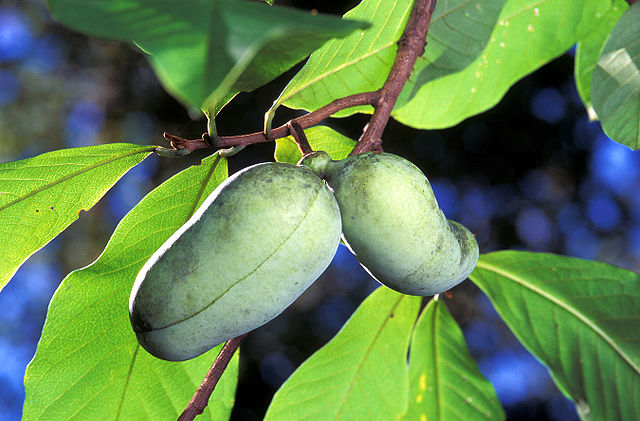
Did you know that Maryland has it’s own “tropical” fruit that could be growing right in your backyard? The Pawpaw tree (Asimina triloba) is a fruiting tree found across the Eastern United States which produces large fruits which are not only edible, but delicious as well. In fact, the pawpaw produces the largest edible fruit of any native plant in North America! The taste is undeniably tropical, and best described as “mango-meets-the-banana … with a little hint of melon”.
You won’t find pawpaw fruits in the grocery store, though. These trees grow in the wild woodlands of the East, they have not yet been commercialized in orchards and plantations. Right now, the only way to get your hands on one is to simply go out into the woods and find some. The fruits can be found in September and October each year and are easily identified by their large fruits.
The pawpaw is native to the United States, unlike the much more common apples and peaches which are so easily found on grocery store shelves. Today, it is found from New York to Texas, but still remains hidden in the shadows (literally – pawpaw trees flourish in the understory of oak-hickory forests). This range grew through cultivation by Native Americans in the centuries before colonial interference.
To go out and find some pawpaw fruits for yourself, there are some key things to look for to maximize your chances of finding a prime fruit. Firstly, search in sloped areas near floodplains, which provide the necessary rich soil and adequate depth for the pawpaw’s roots. When looking for fruits, they become ripe in late August to September in Maryland. Interestingly, the fruits do not change color to indicate ripeness, they instead emit a sweet smell, like that of a cantaloupe. Avoid eating the skin or the seeds, as they contain toxins. There are many ways to prepare a pawpaw fruit, but they are typically consumed fresh and raw.
References:
https://plants.usda.gov/DocumentLibrary/plantguide/pdf/cs_astr.pdf
Tulowiecki, S. J. (2021). Modeling the geographic distribution of pawpaw (Asimina triloba [L.] Dunal) in a portion of its northern range limits, western New York State, USA. Plant Ecology, 222(2), 193-208. https://doi.org/10.1007/s11258-020-01098-x
Image Credit:
Scott Bauer, USDA, Public domain, via Wikimedia Commons, https://commons.wikimedia.org/wiki/File:Asimina_triloba3.jpg
